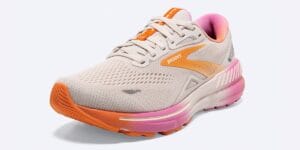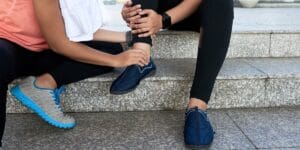Hello again, young athletes and caring parents! If you read the first post about Sever’s Disease, that pesky heel pain afflicting adolescents. Today, we are diving into some more information – the conservative and surgical options – to help you understand and conquer this heel pain and get your child back to their active life!
A Quick Recap
Remember, Sever’s Disease most commonly affects active kids between 6 and 13 years old. It causes pain behind or at the bottom of the heel, especially during or after sports. But fear not, in addition to the at-home recommendations discussed here, because there are some fantastic conservative treatments to help you heal!
Heel Lifts and Cups
One great way to conservatively treat Sever’s Disease is with heel lifts and heel cups. These devices help to lift the heel off of the ground, provide compression around the heel, and work to give your feet extra support, cushioning and relieve tension caused by tight muscles and tendons.

Arch Supports
Arch supports are important to relieve pressure and keep the pain at bay. As discussed before, not all inserts are made equal and many of the types that you find on the shelf at your neighborhood pharmacy are not effective for long-term support and treatment. Properly fitted and supportive orthotics, recommended by your podiatrist, help your feet maintain correct positioning and reduce the pressure causing the pain in your heels.
Ice and NSAIDs
Cold packs (ice) can help reduce inflammation and pain. Be sure to wrap the ice pack in a cloth to protect your child’s skin. NSAIDs (like Ibuprofen or Motrin) can also help with pain and swelling but always check for pediatric dosing before giving any medicine. It is important to note that medications that are acetaminophen-based do not help with inflammation and swelling and only help to cover up the pain that your child is experiencing.
Stretching as a Daily Habit
We talked about stretches before, and they are still the number one thing to help improve heel pain! Keep doing those stretch band exercises and calf stretches regularly.

Short Leg Cast / A Walking Boot
In severe cases, a short-leg walking cast or a walking boot can be the additional step your child needs to get pain relief. Wearing one for a few weeks can give the heel the rest it needs to heal and have the inflammation subside.

Surgery is an absolute last resort
The last thing to touch on is the dreaded S-word … Surgery. Let’s make one thing clear: most kids with Sever’s Disease will NEVER need surgery. In rare cases, it might be the best option to say goodbye to heel pain for good. Don’t worry; your podiatrist knows when this is necessary. When surgery is the answer to help with this type of pain, it is usually a minor procedure where we release a small portion of the tight plantar fascia ligament or make a few small incisions to lengthen the Achilles tendon. Tightness and contractures in these soft tissues are often likely the troublemakers causing all that pain for your child.
After surgery, a compression dressing is applied to the foot/ankle for 1-2 weeks and, in addition to medication, will help decrease the pain and swelling to accelerate the recovery process and keep your child as comfortable as possible. Most kids can start walking on their foot again right after surgery, usually with a protective boot, but they will need to take it easy for a few weeks, so no sports activities just yet until fully recover.

A Slow Comeback
After all these treatments, conservative or surgical, it is important to gradually get your child back into their favorite activities. Their heels will appreciate a gentle return to action and not aggravating the problem by “pushing through the pain.”
With these treatment options, your child is well-equipped to defeat Sever’s Disease and get back to an active, fun-filled life. Remember, usually, children can battle through a lot of pain and if they are complaining about the pain to the point where it is stopping them from doing what they want to do, you should not hesitate to ask your podiatrist for help. Remember, it is only in rare circumstances that surgery is needed, and working with a podiatrist will help you and your child create a plan to get them back to activity in no time!



